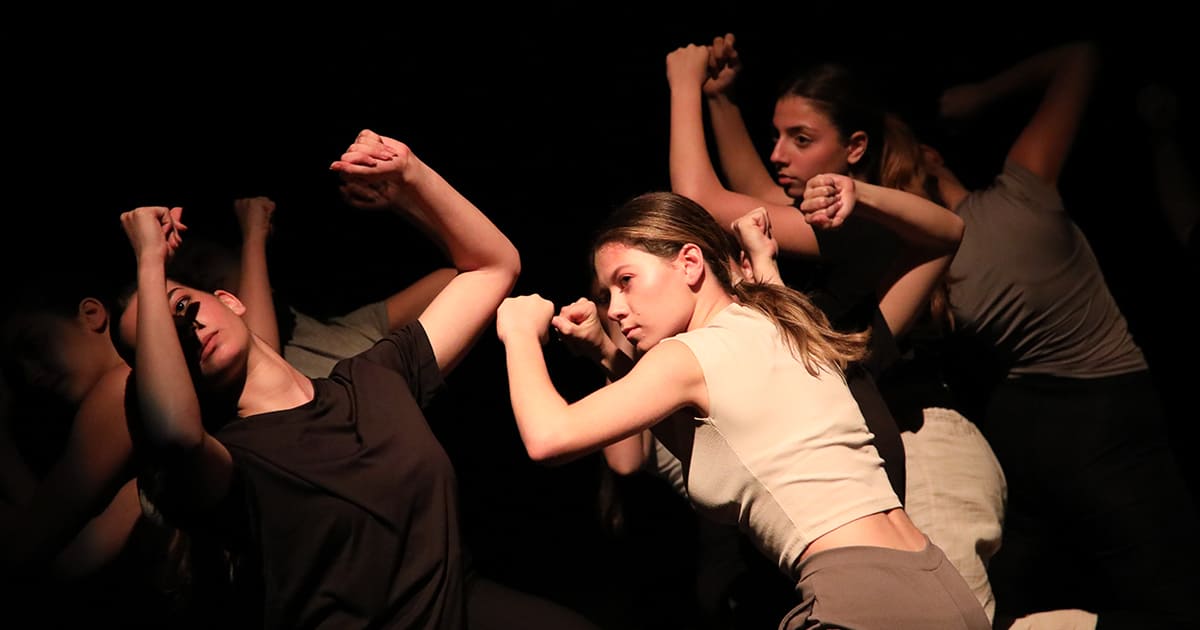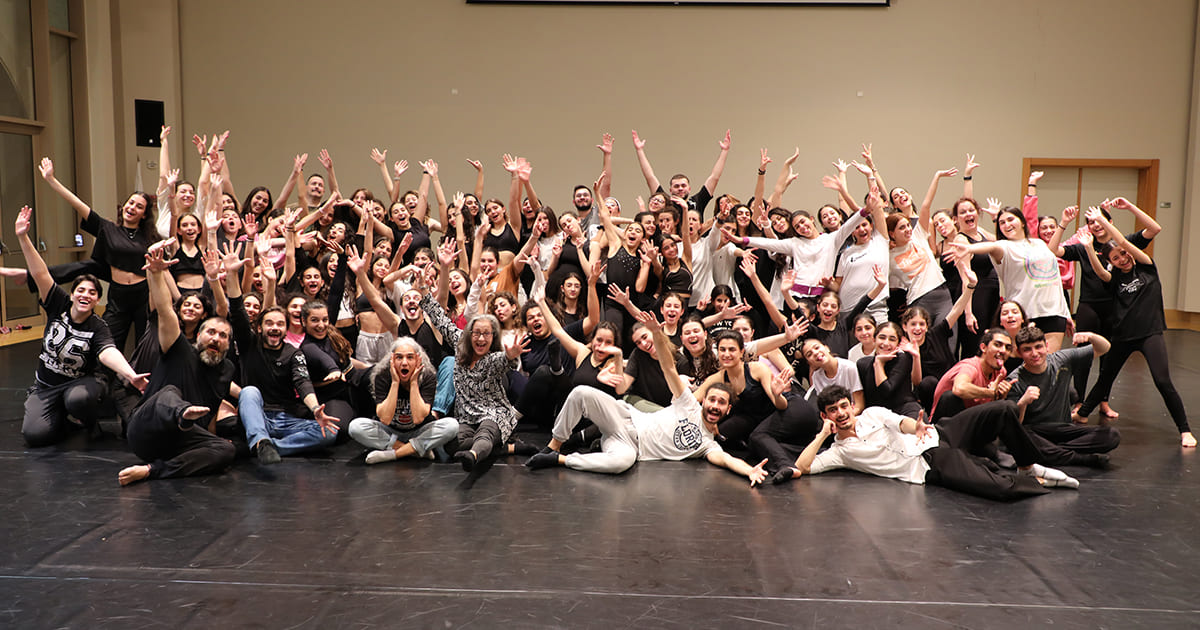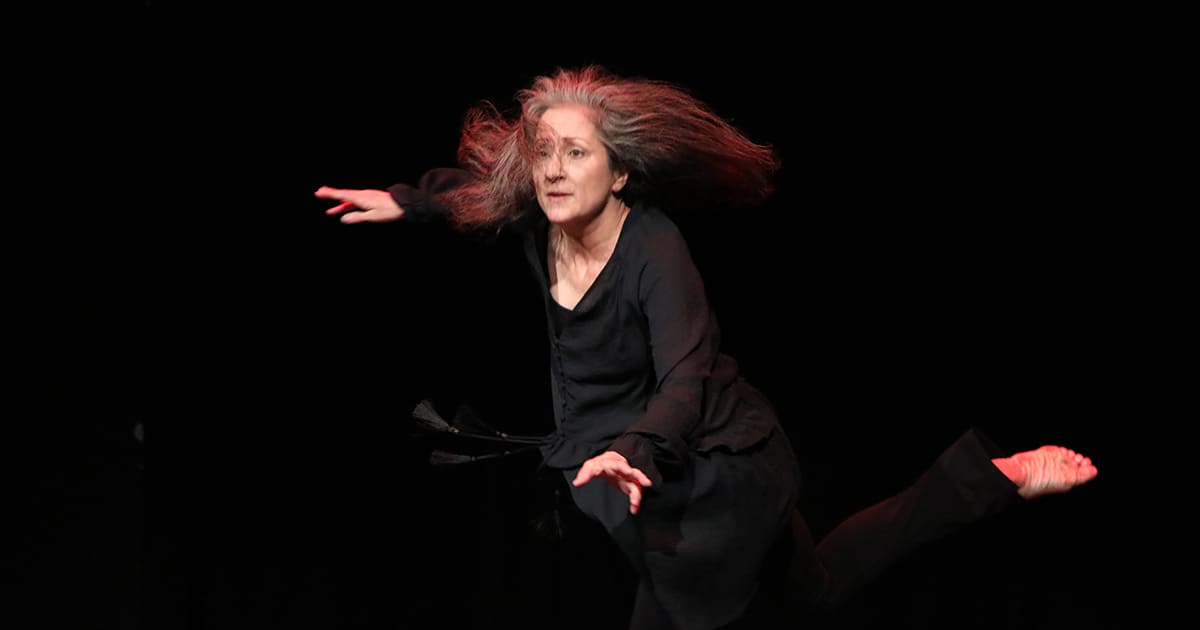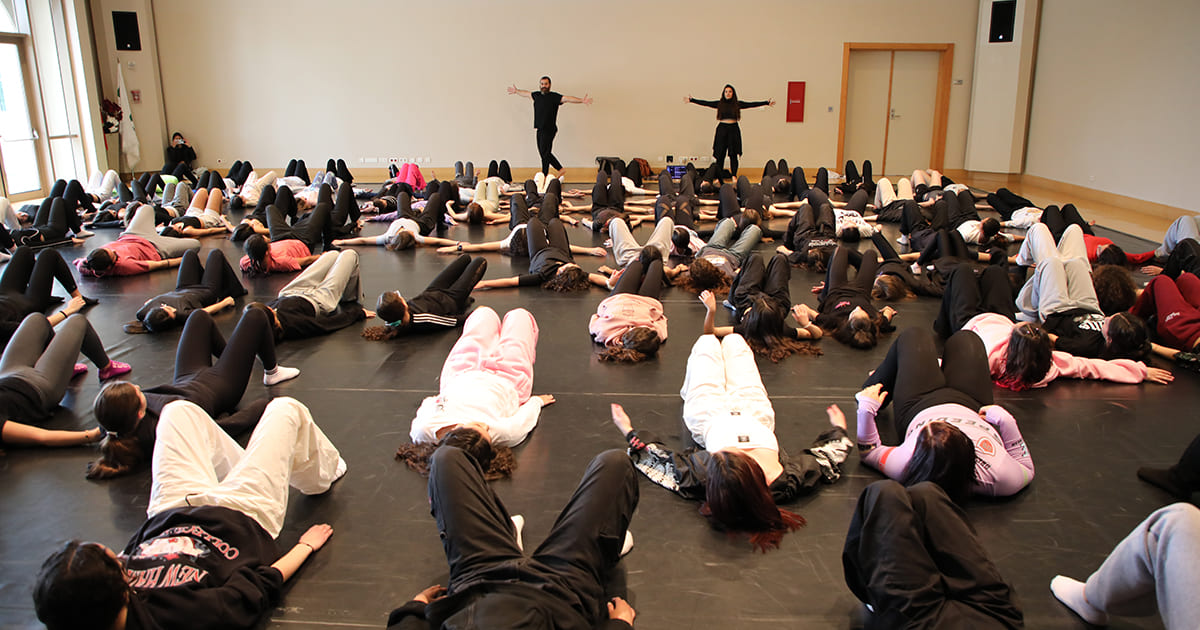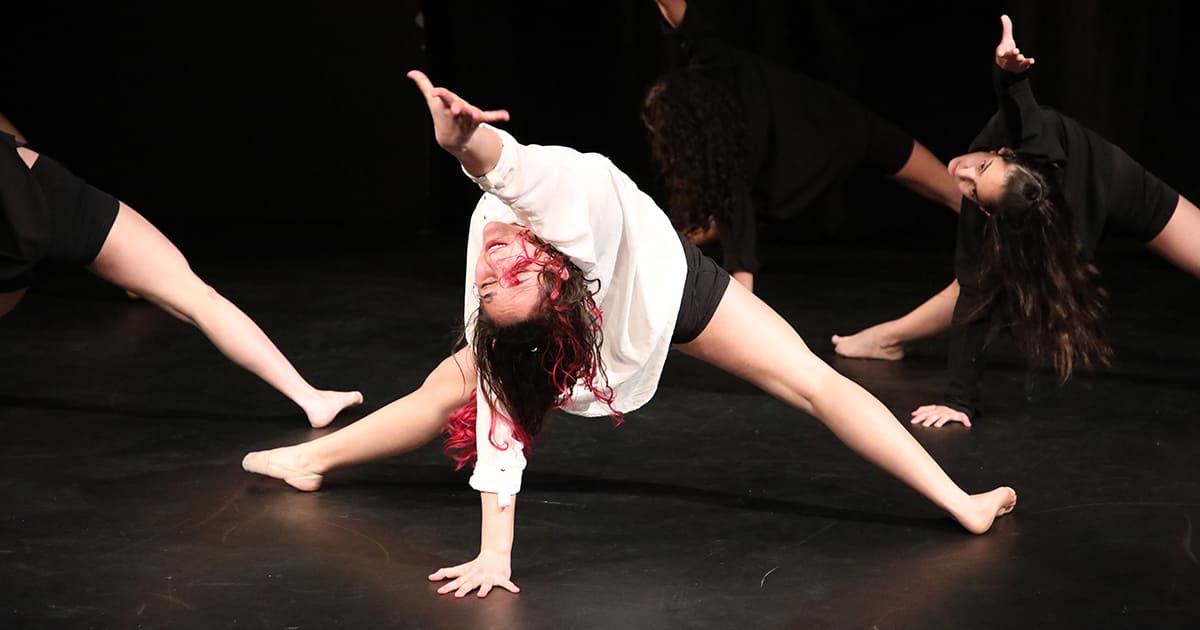To Dance Toward Tomorrow
LAU’s 15th International Dance Day Festival in Lebanon offers students and participants an outlet for expression, healing and professional growth.
Throughout history, dance has transcended linguistic barriers and served as a universal means of expression. For Dr. Nadra Assaf, associate professor at the School of Arts and Sciences, dance offers the individual a path toward resilience and communication unlike any other.
Every spring, this passion for movement is celebrated during the International Dance Day Festival in Lebanon (IDDFL), where dancers gather for a week of auditions, intensive workshops and performances under the guidance of regional and international experts.
Returning for its 15th run this year, titled Harmony Within Chaos, the IDDFL took place from April 7 to 12 across the LAU Beirut and Byblos campuses and saw the participation of more than 480 performing arts enthusiasts. With over 30 distinct classes spanning contemporary, ballet, improvisation and other traditional forms of dance, the festival’s program was curated to offer an overview of dance beyond core techniques.
The festival, founded and directed by Dr. Assaf—who at the time felt as though “dance lacked formal recognition in higher education institutions in the region,” as she put it—has grown alongside LAU’s Performing Arts program. Having witnessed its progression, Dr. Assaf takes great pride in its widespread impact and the recognition it continues to garner.
“Above everything, I am happy that the IDDFL provides our students with supplemental training and networking opportunities,” she added. “These kinds of opportunities help develop their sense of self and confidence, where they take center stage and grab the world by its shoulders.”
Over three days, from April 8 to 10, the workshops featured classes run by LAU Senior Instructor Volodymyr Panzhev as well as renowned international dancers, such as Associate Professor of Dance Education at Teachers College Matt Henley and Professor of Dance at Stockton University Rain Ross, among others.
Combined, they informed the students about global dancing methodologies, from modern to classical, and showcased the importance of dance as an art form belonging in academia.
The festival’s emphasis on skill transmission through international exchange provided participating students with practical professional preparation for their careers—an advantage in a sector where career pathways often appear limited.
Collective efforts by faculty and participants led up to the festival’s final performance on April 11 at the Gulbenkian Theater on the Beirut campus, during which LAU’s performing arts students channeled their days of rehearsals into a comprehensive, kinetic release.
Prima ballerina Georgette Gebara gave prominence to the university’s “lifelong mission in educating the next generation,” she said in her opening speech during the performance day.
In an anecdotal statement, she called for institutions like LAU to hand their students artistic instruments, “perhaps a violin, a paintbrush, or even dance shoes, for they are magical articles that express peace, rebirth and civilization in times of destruction.”
“Each piece we saw during the performance,” said Dr. Assaf, “is a form of catharsis for the students from the hardship they had to endure during the war.” She added that the urgency of bodies in motion on stage and the raw expressions they conveyed “in a way make up for lost time.”
A community day on the Byblos campus was held the day after the performance, with dance classes running from morning to night, allowing participants to engage in various genres, such as hip-hop, folkloric and commercial dance. This cultural blend of styles taught by an array of professionals not only maintains artistic creativity but also opens room for broader community engagement with dance.
By emphasizing the persistence of movement, “even when the ground beneath is anything but stable,” noted Dr. Assaf, LAU’s community continues to show its defiance and resilience in the face of adversity. For this reason, the IDDFL has become a vital platform for artistic and academic achievement.
